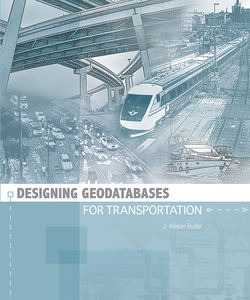Читать книгу Designing Geodatabases for Transportation - J. Allison Butler - Страница 50
Segmentation methods
ОглавлениеSeveral references have been made to the traditional transportation dataset structure of short segments with repeating attributes. This is a perfectly valid way to go if you have a manageable number of segments and relatively few changes to the system other than added facilities, which is the case for most local governments. Once built, roads are rarely removed. Subdivisions add new mileage. Annexation may change jurisdiction for a road, but it does not eliminate the road itself. Most capacity projects will widen a road, not change its location. All in all, this is a relatively stable situation where editing means adding new roads as they are opened to traffic.
The least demanding way to accommodate the needs of smaller datasets is to break roads and other linear facilities at intersections, but not to actually create intersection features. The resulting “independent” segments work fine for basic mapping needs and geocoding. The viewer will not be able to discern that a given line segment is composed of smaller pieces.
Figure 4.9 Independent segments The simplest approach to making a transport dataset is to create independent segments representing linear portions of the total system. A typical way to do this is to segment longer facilities at intersections. Each segment gets the same set of attributes so that values extending across segment termini are duplicated for all segments to which the value applies. You can use segment attributes to determine line symbology, or create separate map layers to represent each kind of facility.
Some database designers may argue that this simple design is inefficient. Although you will have to duplicate much data for contiguous segments of the same facility, this overhead only applies as a facility is added to the dataset. This initial workload may be offset by avoiding more complicated structures that impose their own overhead. You also do not need perfect geometry with no overlaps or gaps unless you plan to build a navigable network.
Figure 4.10 Link-node The link-node approach, which adds terminal nodes to the set of segment links, offers the next level of database design complexity. This design has two advantages over the independent segment approach. First, it can be used to construct a network for pathfinding. Second, it can supply features for storing intersection attributes or organizing such data as a traffic signal inventory or a crash reporting system.
If you do need a navigable network, you will likely want to add formal intersection node features to serve as junctions for segments, which become links (edges) in the network. As will be shown in chapter 13, the ArcGIS Network Analyst extension can construct junction features for you. However, there are benefits to constructing them yourself, such as providing information about the junctions to the pathfinding application. You may also want to provide different travel costs for each intersection subtype.
Figure 4.11 Node offset Sometimes you need to reference a location between nodes at a point along a link. One approach is to identify the node (origin), the link to travel down, and a distance to travel. This design is actually quite common, although the nodes are usually implied rather than expressed. We call it addressing, and it serves as the foundation for all one-dimensional (1D) location referencing systems.
One of the issues with any segmentation scheme is that you will eventually need to refer to a location within a segment. Whether you need to locate a midblock intersection, illustrate parking restrictions, or identify sign locations, it will be frustrating to find yourself limited by an indivisible segment. One approach is the node-offset linear measure. You use this approach all the time; you just call it addressing, geocoding, or project stationing. Pick a reference feature, like an intersection or a node, and a segment or link to travel down, and then specify how far to go. This is sort of like a route-milelog approach, but the routes are very short.
